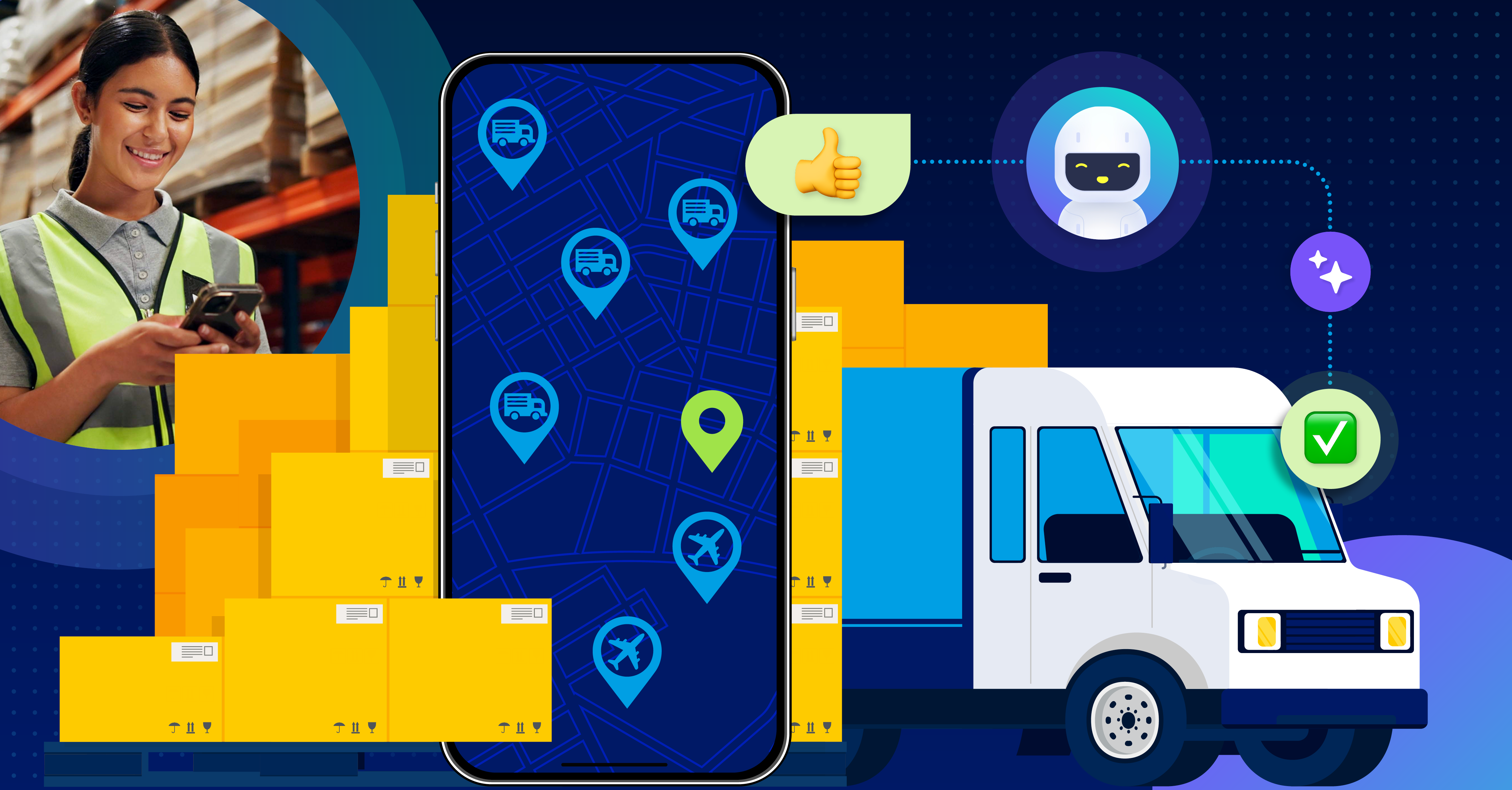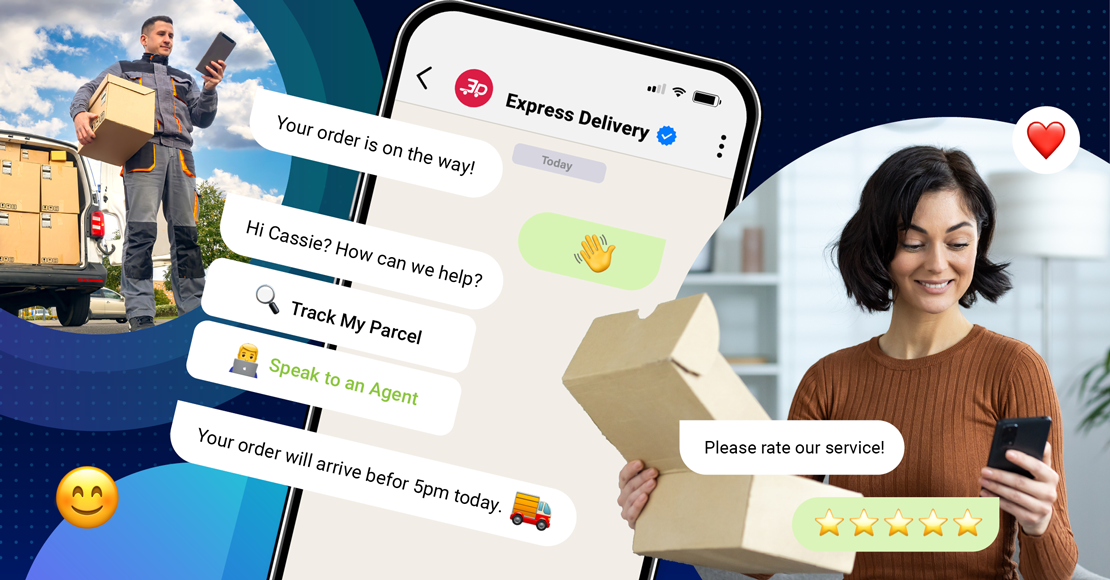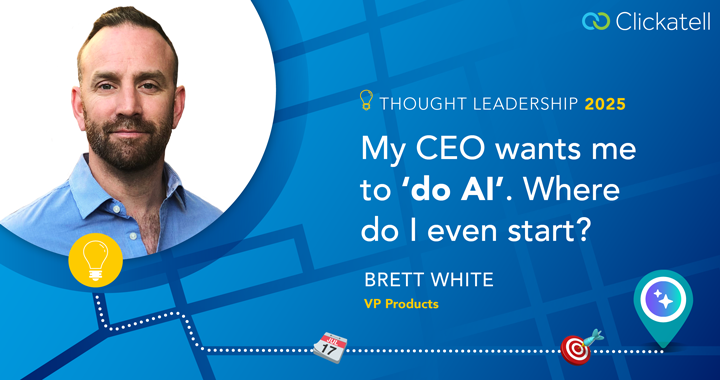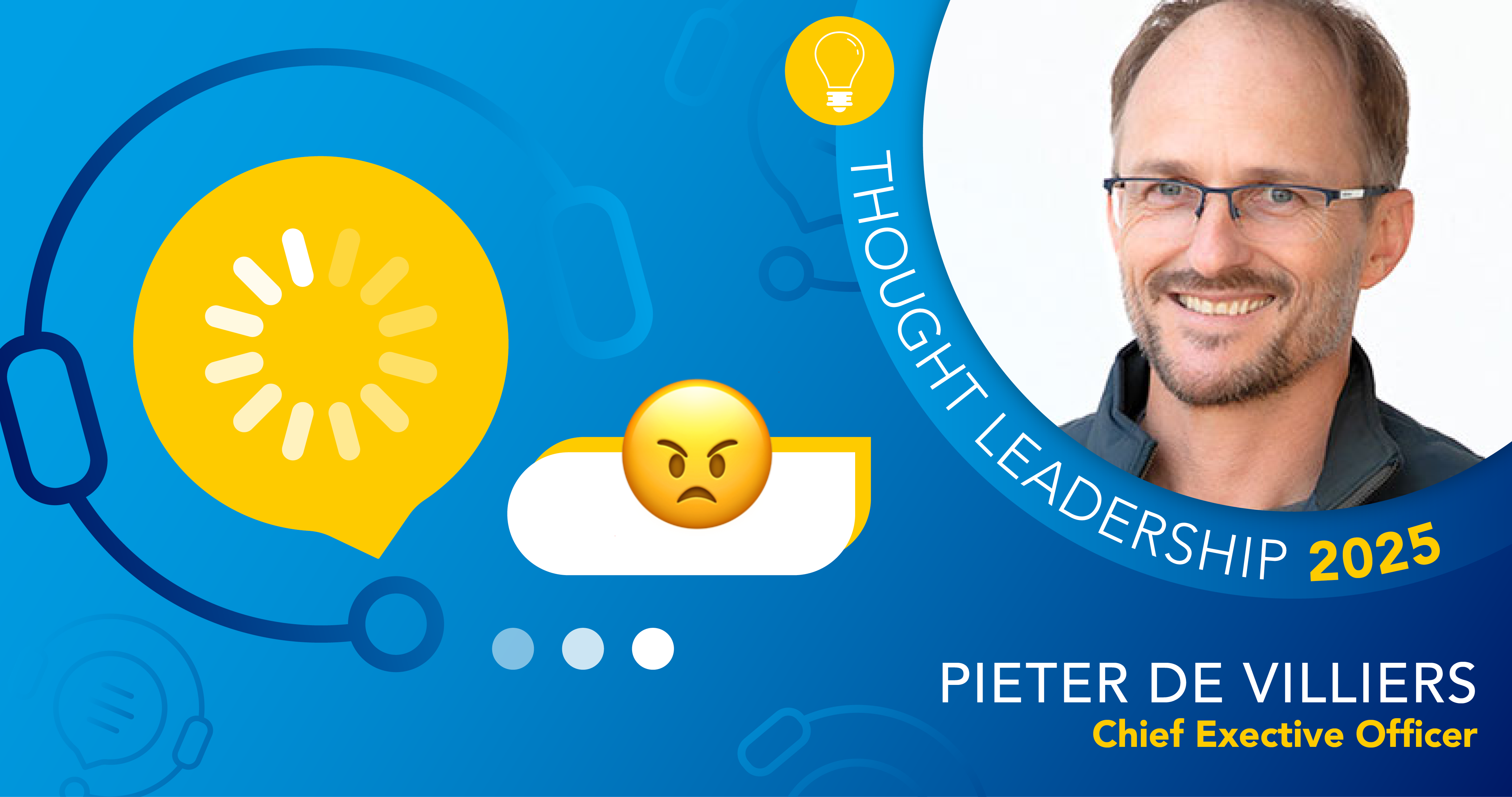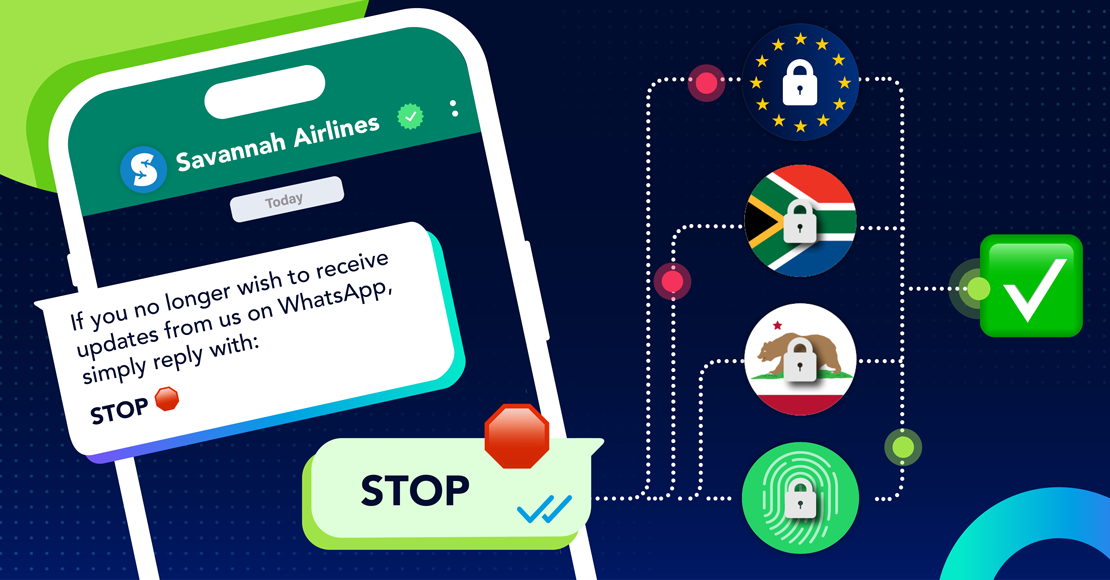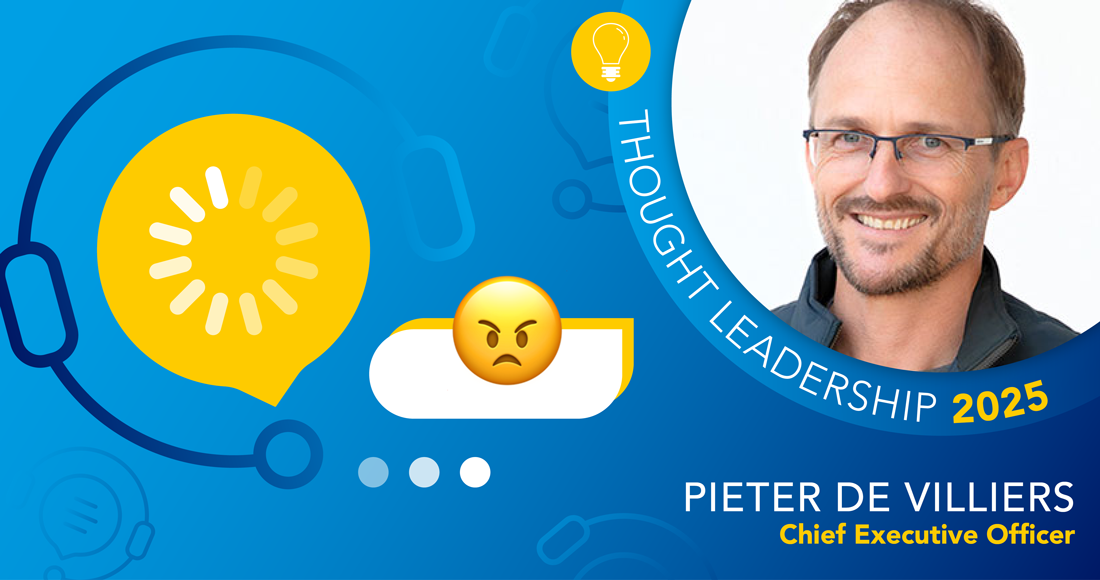
by Pieter de Villiers
CEO, Clickatell
Every modern company claims they’re “customer obsessed.” They spend millions on contact centers, rolling out voice, email, chat, and social channels in a bid to “unify” communications. But behind this shiny omnichannel veneer is a legacy paradigm built for an era of toll-free numbers and hold music, where you, the customer, when reaching out to engage with a brand, laboriously enter that brand’s world on their terms.
Today, your customers don’t want to be forced through that funnel. They want to connect with your brand as naturally as they text a friend. And if your approach to chat or messaging is still bolted onto the call center, you’re already two steps behind. The conversation has moved on, and it’s happening in chat threads on messaging platforms with billions of users, like WhatsApp, Messenger, iMessage, WeChat, etc.
Enter chat commerce: a whole new category of technology and way of thinking about customer journeys that puts your business at the center of the biggest communication revolution since the smartphone, and your customer at the center of your engagement strategy, and not the other way around.
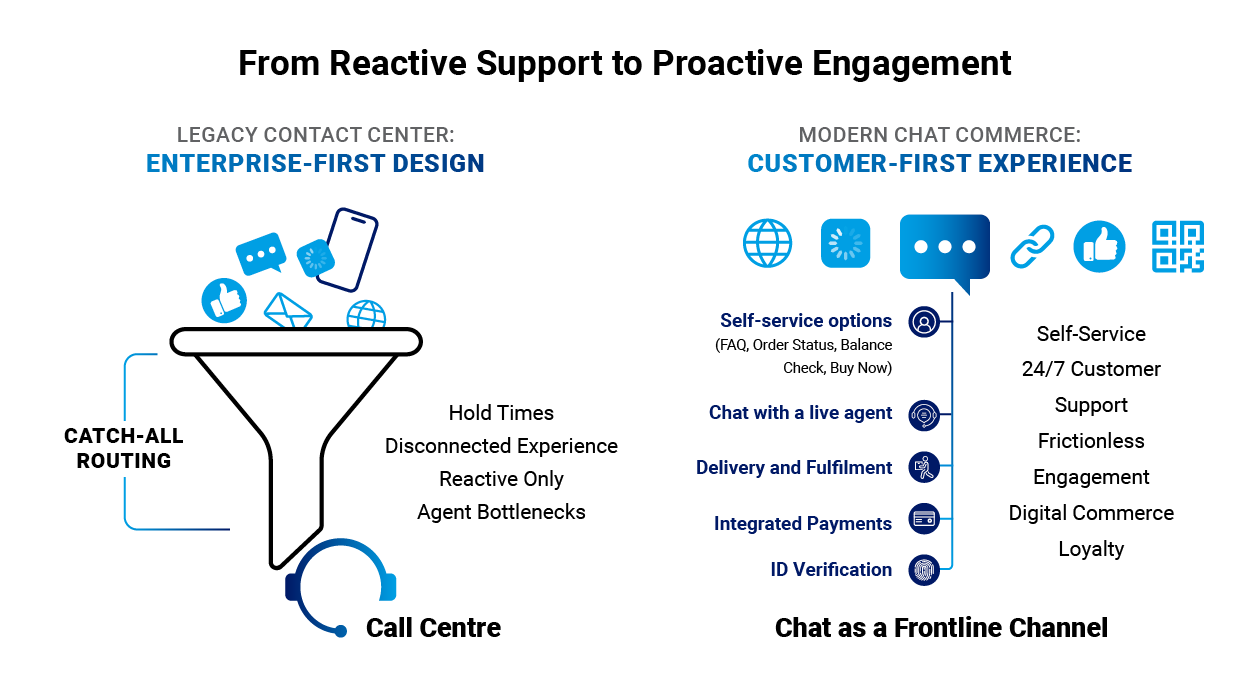
Chat Is More Than Just Another Channel in The Contact Center
So-called “unified communications” was meant to solve the fragmentation of phone, email, messaging, and social channels. It combined them under one umbrella, typically owned by the contact center team. On paper, this sounds like a neat solution. In practice, it’s a company-, or enterprise-first design:
All interactions funnel into the contact center.
Agents juggle phone, web chat, social direct messages, and even “AI chatbots.”
The contact center system tracks these conversations as if they’re all basically phone calls.
The number one use of smartphones is to chat and send messages:
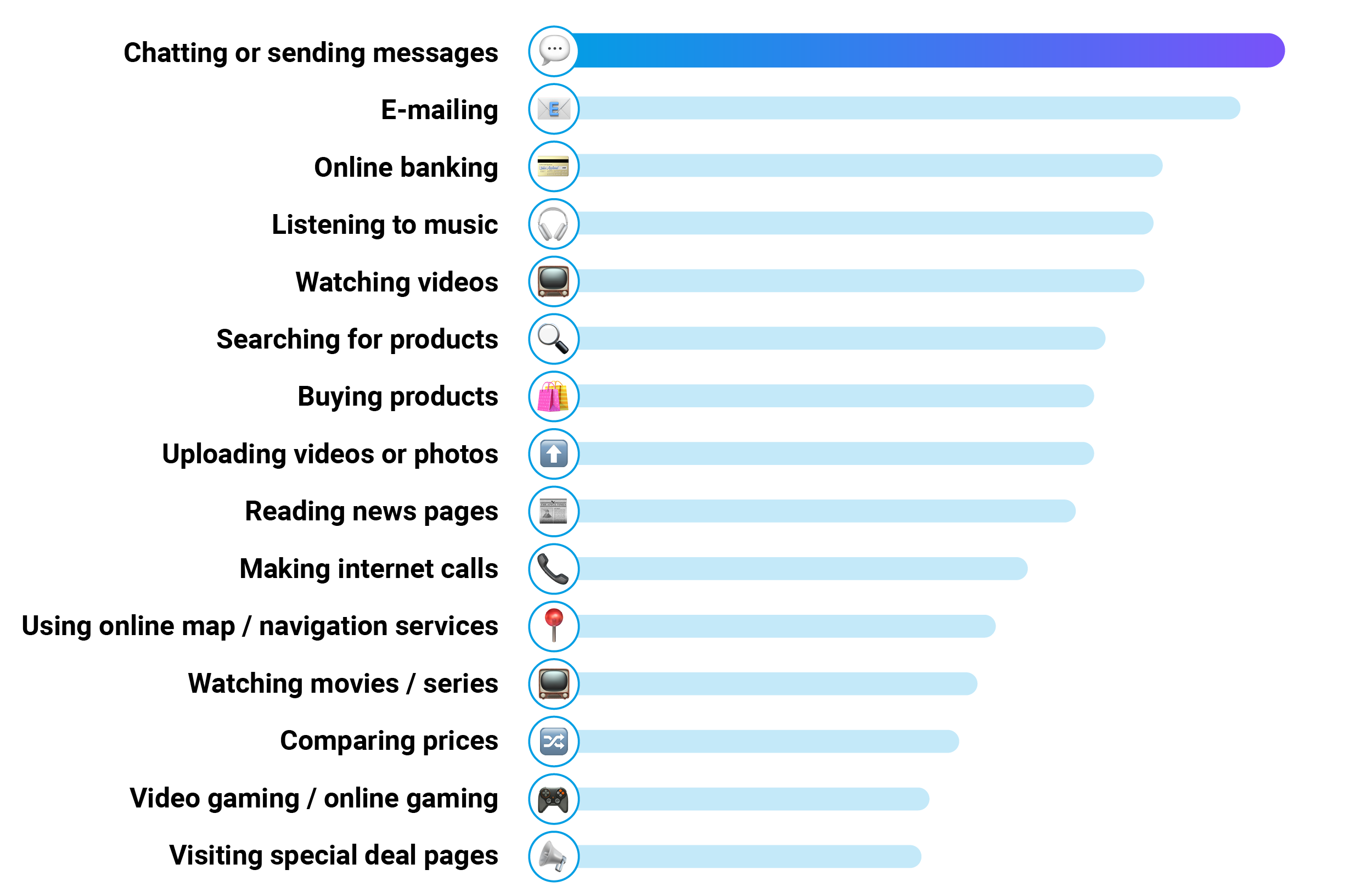
SOURCE: https://www.statista.com/statistics/1337895/top-smartphone-activities/
But chat platforms and messaging apps (like WhatsApp, Messenger, and WeChat) aren’t phone calls. They are new digital ecosystems where users spend most of their daily screen time. They serve as personal command centers where people book flights, catch up with friends, share memes, run group projects, or buy new shoes. Consumers don’t enter a chat app expecting to be re-routed to a “press 1 for sales” phone tree. They expect a seamless, immediate experience.
When you bury chat in the call center, you’re saying: “This is just another channel for inbound complaints.” You’re ignoring its biggest potential: letting customers explore, transact, and solve problems natively in the messaging environment they already love.
Why the “Catch-All” Contact Center Mindset Is Obsolete
1. No one wants to be on hold.
Millennials and Gen Z especially will hang up if they get stuck in a phone queue. They expect 24/7, on-demand responses—like the rest of their digital world. You can’t meet that expectation with a call center mentality. Chat, however, is built for asynchronous replies. Customers can send a question and carry on with their life; your system can respond instantly (with an AI bot) or queue them without making them wait idly.
2. App fatigue is real.
“You want me to download another app just for your store?” That’s a hard pass for most of your customers. We already have more apps than we use. Messaging apps, however, are already on everyone’s phone. Instead of funneling people to a separate platform, meet them where they are.
3. Chat is not just a ‘support channel.’
Airlines are distributing boarding passes via WhatsApp. Banks onboard and verify new customers in chat. Retailers push frictionless promotions where you can ask questions and hit “buy” without leaving the conversation. In short, chat’s sweet spot is proactive engagement and commerce, not reactive problem-solving alone.
4. AI is more effective in chat than on calls.
It’s often easier to automate text-based interactions than voice calls. Chatbots can handle common queries, route complex questions to live agents, and maintain context over time. That means better first-time resolution. Plus, your brand can gather data on every tap, every question, to constantly improve personalization and processes.
5. “Unified communications” is still an enterprise-out approach.
The brand decides how to route customers, the brand sets the queue, the brand lumps chat, voice, and everything else in the same pipeline. Customers get forced into corporate workflows. But truly modern CX flips the script: it starts with the channel and style the customer prefers—which, more and more, is chat and messaging.
Enter Chat Commerce: Building a “Consumer-In” Infrastructure
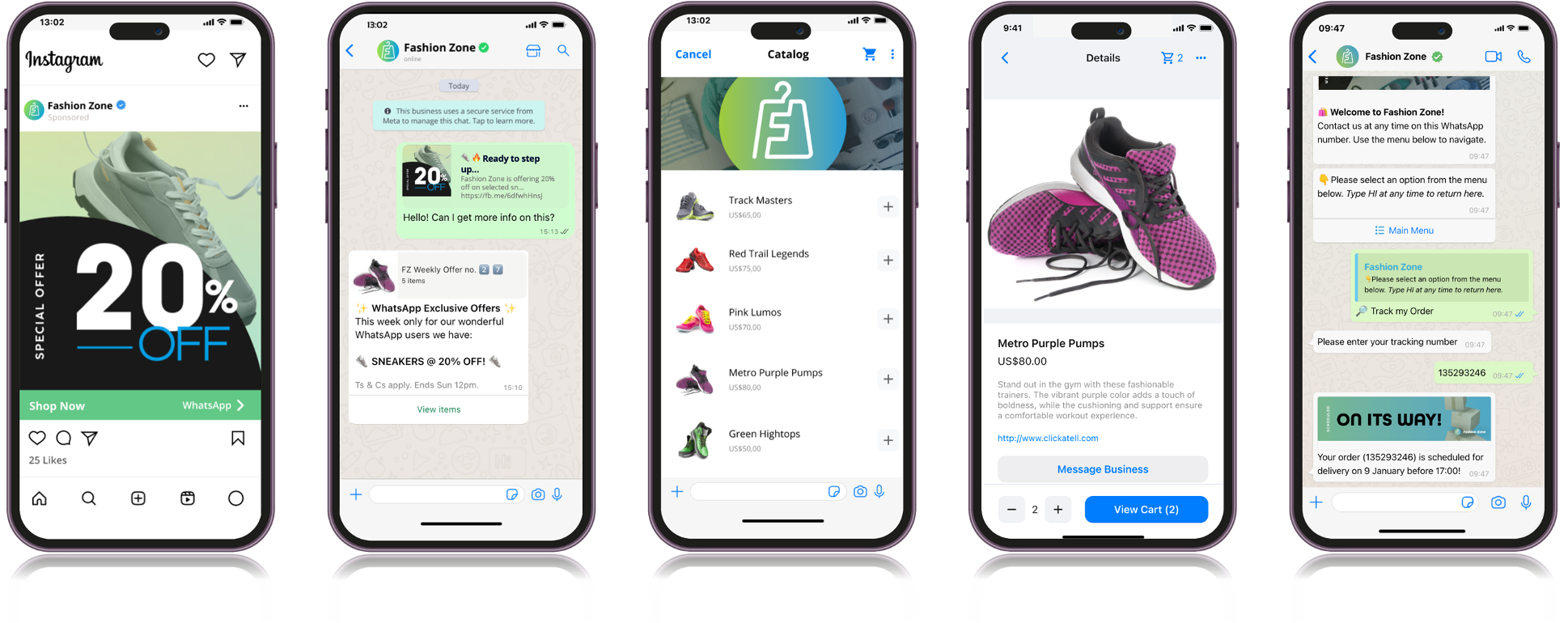
The end-to-end user journey.
Chat commerce is simple in theory: treat chat like a first-class commerce platform. That means letting customers:
Discover products or services,
Ask questions in a conversational flow,
Transact with frictionless payments,
Track orders or updates,
Resolve service needs without repeating themselves.
And all in the same chat thread, with zero hold times, zero forced phone calls, and zero extra apps. In your architecture diagrams, chat shouldn’t live under “Contact Center.” It belongs where your web and mobile app commerce platforms sit. Chat is simply another digital storefront, arguably the most convenient one.
If chat remains stuck in the support domain, you’ll only measure it by cost savings or call deflection. But if you embrace chat commerce, you can design entire revenue-driving flows. Airlines can upsell seat upgrades via WhatsApp. Banks can cross-sell financial products inside a single conversation. Retailers can embed loyalty programs and re-order prompts directly in the chat. No phone calls, no bouncing links, no waiting.
A robust chat commerce platform uses AI bots for routine tasks (checking status, simple Q&A, easy transactions) and escalates complex issues to agents. This concurrency, where one agent handles multiple text conversations, also lowers operational costs. Meanwhile, marketing teams can push personalized offers over chat or effectively notify customers of relevant information. Brands can shape the customer experience end-to-end without locking customers into an old-school call center funnel.
Proof That It Works
A major food retailer reduced call center volumes by half, allowing customers to manage loyalty cards and balances via chat. That’s 50% fewer calls with agents, and 50% less times customers didn’t have to endure hold music.
A consumer bank onboarded 400,000 new customers via WhatsApp. No app download, no branch visit. Just a valid cellphone number linked to WhatsApp, and a smartphone with a camera for biometric registration.
An airline reduced cost-to-serve by up to 90% by distributing boarding passes, updates, and offers in chat.
These examples aren’t hypothetical. They’re a glimpse into how chat commerce slashes overhead, shortens resolution times, and opens brand-new revenue streams.
“No Hold”: A Provocative Slogan for a New Category
Remember when Salesforce championed “No Software” to push cloud computing? Chat commerce needs an equally daring rallying cry. Let’s propose “No Hold”, because the end-goal here is freeing the customer from the tyranny of waiting, whether on calls, in queues, or in forced channels. We’re in a new era where everything can be done quickly, on the go, and now in a chat thread.
🚫 No hold: The conversation takes place either immediately or asynchronously, but the customer is never stuck.
💬 No app: Instead of a bespoke mobile app, your brand joins the customer’s daily chat environment and routine.
✨ No friction: The user journey is intuitive and convenient, from marketing to checkout to support.
Why This Matters Now
The customer landscape has changed. Gen Z and Millennials now make up the largest consumer base, and they have little patience for outdated support models, especially phone calls and 1-800 numbers. For them, chat is the default. It’s how they communicate, shop, and solve problems. If your brand isn’t meeting them there, you’re not just behind, you’re losing them!
At the same time, messaging apps dominate mobile screen time. The top apps on most device are usually chat-based, accounting for nearly all daily digital engagement. Customers live in these spaces. Asking them to leave their familiar messaging environment just to interact with your business adds friction, and friction kills conversion.
The business case is undeniable. Companies moving from voice to chat are seeing dramatic results: operational costs per interaction drop by as much as 80–90%, customer satisfaction soars, and resolution times shrink. More importantly, brands that make it easy to do business are rewarded with greater loyalty and higher lifetime value.
Action Steps: Move from “Catch-All” to “Chat Commerce” Today
Assign Chat Commerce to a Digital Transformation Lead. Don’t bury it in the contact center. Put it under digital transformation or CX, so it’s viewed as revenue- and experience-focused, not just cost reduction.
Map Out Core Journeys for Chat. Which interactions can you move into chat for maximum impact. Onboarding? Flight check-in? Product queries and checkout? Brainstorm quick wins that reduce friction and yield immediate ROI.
Partner With a True Chat Commerce Platform. You need official integration with WhatsApp, Messenger, Apple, etc., as well as to build integrations into your own systems. Robust payment systems, orchestration between all the layers, and the ability to escalate to human agents.
Adopt a “Customer-In” Mindset. Ask: “How do they want to engage?” Then design from there, integrating your CRM, order management, marketing offers, and payment flows under the hood, means the conversation thread is seamless.
Measure, Refine, Expand. Track metrics like chat conversion rate, cost per chat vs. cost per call, chat-based revenue, and average resolution time. Expand from simple support scenarios to advanced commerce flows once you see success.
Embrace the Revolution or Watch from the Sidelines
This isn’t about tacking on another channel. It’s about a wholesale recalibration of how we serve and sell to customers. If you’re still funneling every interaction into a phone-heavy contact center, you’re missing out on the real revolution: customers (especially younger ones) want end-to-end journeys in chat.
Look to the future: in China, WeChat is the default OS for life. Bill payments, e-commerce, ride hailing, socializing, gaming, all in a single chat app. That future is coming for the rest of the world, led by WhatsApp, Messenger, and others. The companies that treat these apps as full-blown commerce and engagement platforms will become tomorrow’s winners.
It’s time to ask: Do you want to cling to a voice-first, hold-music culture? Or do you want to champion a category that frees customers from queues and unlocks frictionless engagement? The choice is yours. But rest assured, your customers have already made theirs. Now, it’s on you to show up or let a competitor beat you to the chat.
🚫 No hold. 💬 No app. ✨ No friction.
Step into the future of business messaging.
SMS and two-way channels, automation, call center integration, payments - do it all with Clickatell's Chat Commerce platform.


